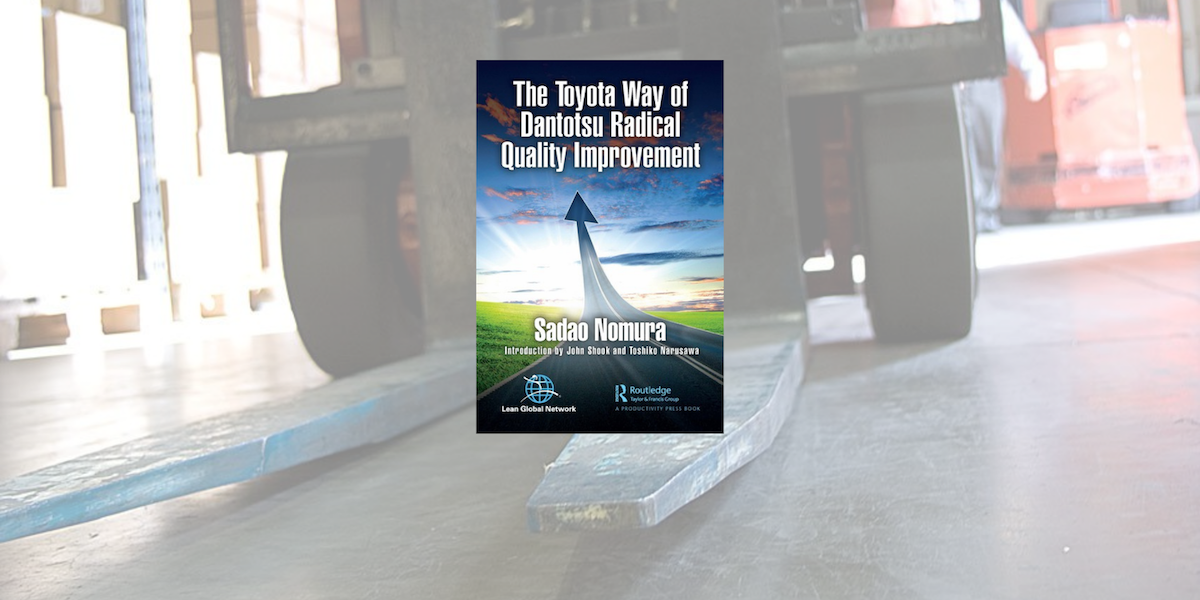
How the Glenday Sieve applies to business processes
FEATURE – In the final article of his series on levelled production, the author debunks the belief that the Glenday Sieve is a method that can only be used in a manufacturing environment.
Words: Ian Glenday, lean coach and author
People often ask me whether the Glenday Sieve can be used in non-manufacturing activities, and the answer is that this analysis tool can indeed apply to any type of process. Over the years I have come across examples ranging from closing the monthly accounts to recruiting new people, implementing a price increase in sales and even promotional planning and execution in a marketing department.
In each of those instances, people seemed to talk about the same problems – firefighting, variability and lack of standards – and the Sieve helped them to solve them. Using it in these environments is a more subjective than mathematical exercise, but it still works – the only difference is that, instead of looking at products, we were working with tasks or activities (green tasks add value, while red tasks – like emails or meetings – add zero to limited value).
The main difficulty is that in manufacturing settings data is readily available to back up people's opinion on what products should be green and what products should be red, whereas assigning activities and "functions" to the two categories (rather than products) is slightly more complicated. To do it, thus bringing clarity over the tasks that really add value, discussion and debate must become daily occurrences.
In this piece, I will share three examples that illustrate the approach in non-manufacturing settings – engineering project management, promotional planning and execution in marketing, and time management for senior leaders.
ENGINEERING PROJECT MANAGEMENT
A company I worked with had tried to improve engineering project management, with little success, for years. One of their attempts involved the creation of a single totally standardized end-to-end process for all engineering projects – whether they were buying a small piece of equipment or building a new factory: naturally it didn't work, as people are not robots and don't like to feel hemmed in by too many standards or being told what to do in every single situation. They will agree with the need for some standards, but also like to have areas where their own views and expertise are called upon to determine the best way forward. It is important to know where one should standardize (green) versus be flexible, allowing personal interpretation and experience to prevail (red).
A team of engineers, managers and quality personnel were brought together to work on a solution. They started with the process map produced by the consultants the company had previously contracted: a set of 500 activities that was doomed from the start. (Who can correctly follow 500 steps?) They applied the Glenday Sieve to the 500 steps, trying the isolate the 6% making the biggest contribution to the improvement of project management in the firm. The debate was lengthy, but this was the only way to ensure all participants would understand why those particular tasks had been selected.
The tasks that were identified came from three key areas of project management: agreement of the initial proposal (project scope, deliverables, timescale, etc.); detailed costing and budget authorization; and post-project review and lessons learned for future improvement of the process. Not surprisingly, these were also the areas the engineers didn't exactly enjoy tackling – running the actual projects was much more appealing to them. Nevertheless, they were necessary to successfully deliver projects. The following step was adopting a method to carry out those tasks – eventually, the firm decided for the approach of another company – an engineering contractor – that they admired.
Everyone was really surprised that none of the activities involved in the process of managing and implementing the project itself were considered "green." I asked them why they thought that would be the case, and they gave me three main reasons: each project is different (big or small, complex or simple, new or old, etc.) and surely their nature determines the degree of sophistication one needs to employ; "This is what we engineers are trained in, it's what we like doing and what we are good at"; there were various software tools available to the engineers, and each of them has their favorite one, so as long as the project got delivered, the tool used to get there didn't matter to the company.
Based on this example, here are a few recommendations you might want to keep in mind as you try to bring levelled production idea out of the shop floor and into the rest of the business:
- Do not attempt to define and standardize the whole process;
- Identify that 6% of tasks or activities that most influence a successful process;
- Develop standardized, repetitive and – ideally – time-based procedures for green tasks.
- Whenever possible, implement a visual monitoring system – you'll see why in the next example.
MARKETING
Promotional planning and execution is the process that seems to have problems in any consumer branded business. There are many reasons for this, including the fact that marketing staff tends to change frequently. Plus, one might argue, the very skills and personality that marketing people are hired for – creativity, innovation, and excitement – don't automatically lend themselves to standardized processes. Yet, the ideas behind levelled production can be used in promotional planning and execution, too.
How? A team I worked with identified three different types of promotions and what percentage each of them accounted for in the overall number of promotions: strategy and new technology represented 10% and the introduction of an existing product into a new market 15%, while the lion's share (75%) went to marketing existing products in existing markets.
Clearly, it was this last type that needed a better process. The team discussed what currently wasn't working and came up with a list of issues that included inaccurate promotional forecasting, delays in the issuing of item codes, and changes in the scope of activities. The only thing that everyone agreed was working well was fire-fighting!
Discussion ensued and the team then determined the conditions that have to be met if the most frequent type of promotion is to run smoothly: they'd need to have everything in place four weeks before a promotional campaign, enforce rules and facilitate communication, and monitor promotional sales. Those were their greens. However, it doesn't matter what the group chooses as green tasks – what matters is that they all decided together.
As a result, they set up a visual management board in the marketing department: every time a new promotion is launched, it is immediately put on the board – with deadlines for each green task clearly displayed. If the deadline is met, a green smiley face is placed in the box; if not, a red sad face is added. This led to a big debate: surely all deadlines must be met if we are to have a successful process, people said. However, our attempt here was to stabilize the process and ensure it'd work better most of the time (in marketing, things are bound to go wrong at times anyway). It is not bad to be red; it's bad not to know why!
TIME MANAGEMENT
These same principles have even been applied to how people manage their time. At one company, senior managers felt they were not being as effective as they could be and decided to try to apply the Glenday Sieve to their own work. But how to decide what's green and what's red? All tasks of senior management are important, after all!
So an exercise was developed, consisting of two consecutive brainstorming sessions based on the following questions:
- What should a good manager do? (This resulted in lots of suggestions.)
- What do you spend most of your time actually doing?
At this point, participants were asked to cross off any of the responses that appeared on both brainstorm 1 and brainstorm 2 – these were the mundane and administrative (read "boring") aspects of their jobs. At this point, what was missing from list 2 was the motivational and developmental activities that they knew they should do, but somehow never managed to perform on a regular basis. (Not everyone had this issue: some people were naturally very good at ensuring their daily routine included these important tasks – sadly, however, they were the exception.)
The activities remaining on the first list help to develop and motivate people and to recognize their achievements – and these are the green tasks for senior management.
Each manager was then asked to develop a weekly schedule for these activities to ensure they were done – and posted it in their office for everybody to see. Rules that supported this goal included: activities in green time must happen except in cases of true emergency; no-one is allowed to interrupt a person in their green time; phone calls, emailing and ad-hoc meetings can only take place in red time.
Despite some initial resistance, this initiative transformed the culture of the business: the management style changed, to embrace the ideas of people development and empowerment, leading by example, and recognizing people's achievements. In essence, the company started to work towards lean leadership and, as a result, it experienced a surge in performance at all levels. Toyota has a similar approach – they call it "leader standard work."
You can find out more about levelled production in Lean/RfS: putting the pieces together

THE AUTHOR

Read more


FEATURE – The authors discuss radical quality improvement at Toyota and introduce a new book by Sadao Nomura that the Lean Global Network has just co-published.


ONE QUESTION, FIVE ANSWERS – Change might be scary but, when things do work out, it also brings us incredible pride and sense of accomplishment. We asked five practitioners to tell us what the most satisfying moment in their lean journey was.


WOMACK’S YOKOTEN – This month, the author looks at the production line, a century-old idea that still fascinates us, reflecting on how lean thinking has changed it.


INTERVIEW – This moving company in Singapore has taken its first steps down the lean road, reminding us that translating your strategy into small, actionable improvements people can make at the gemba is the way to a transformation.

